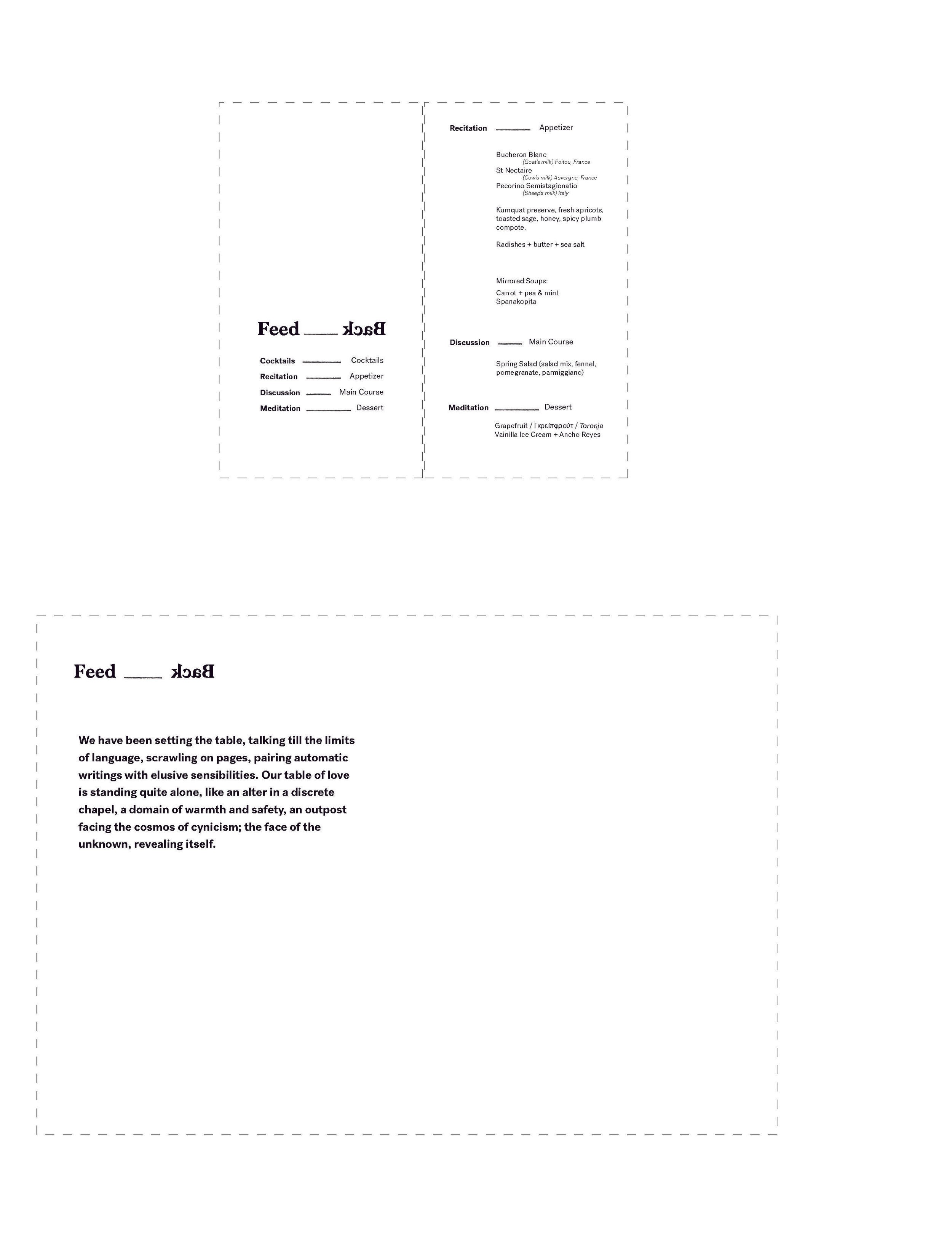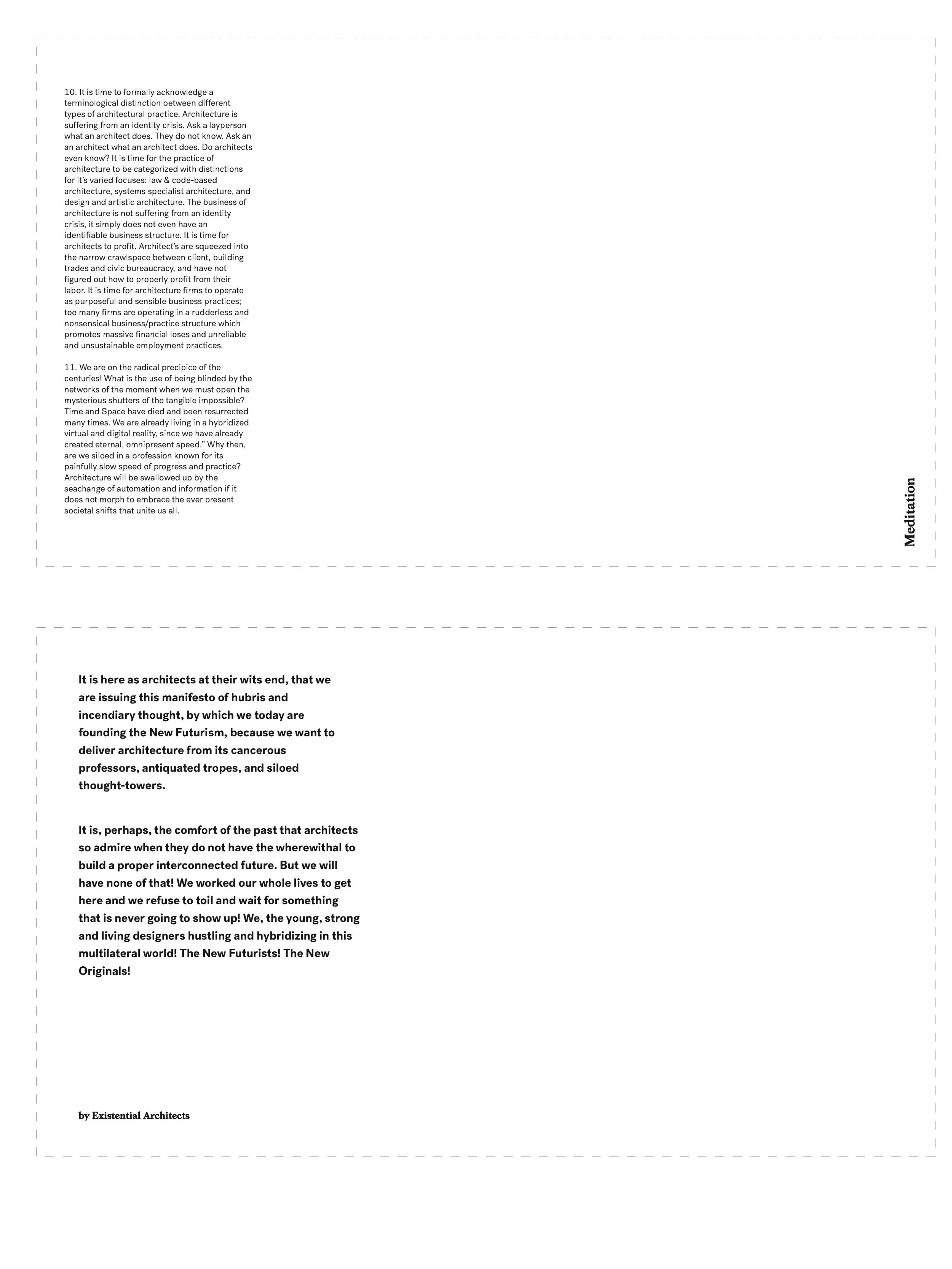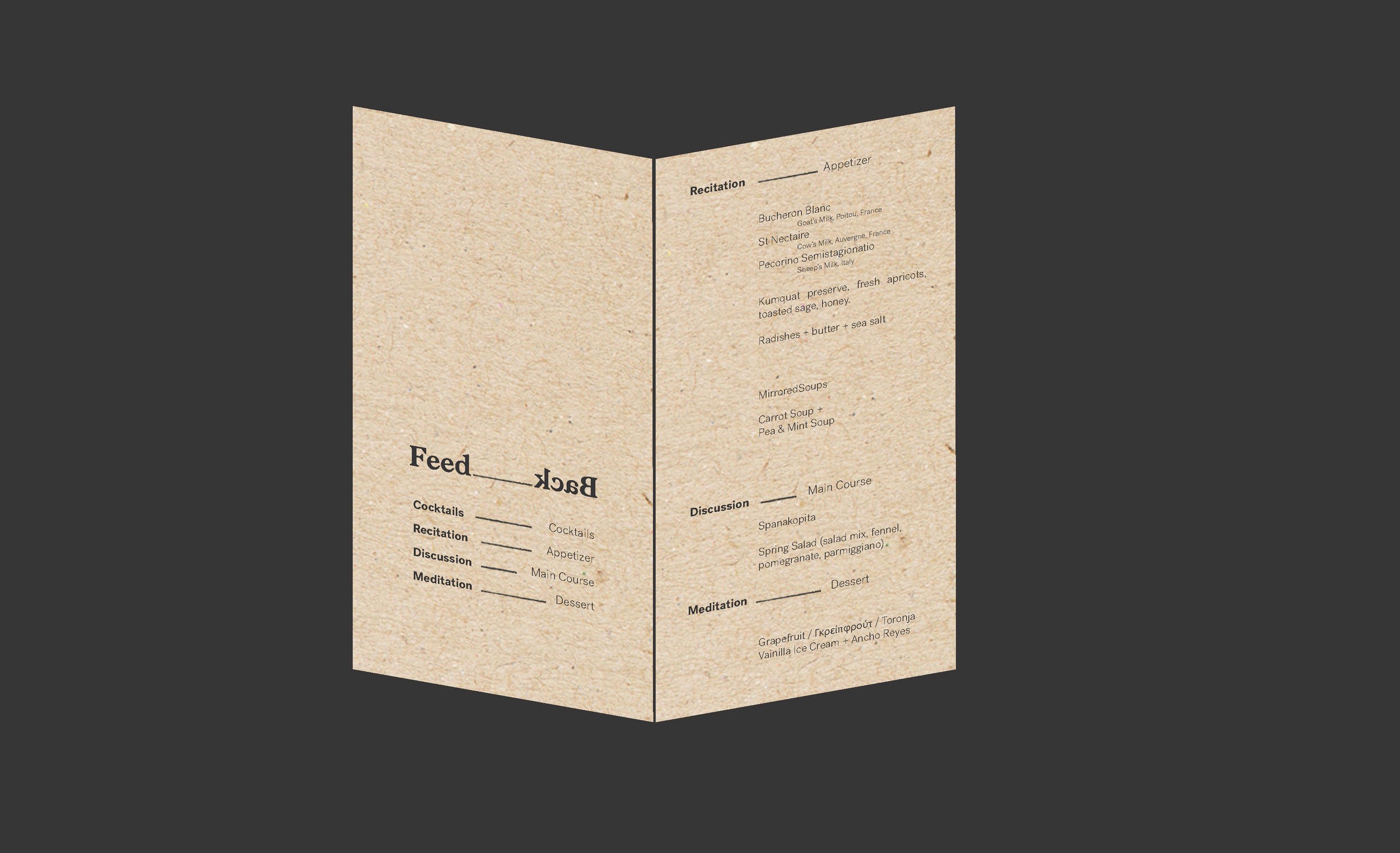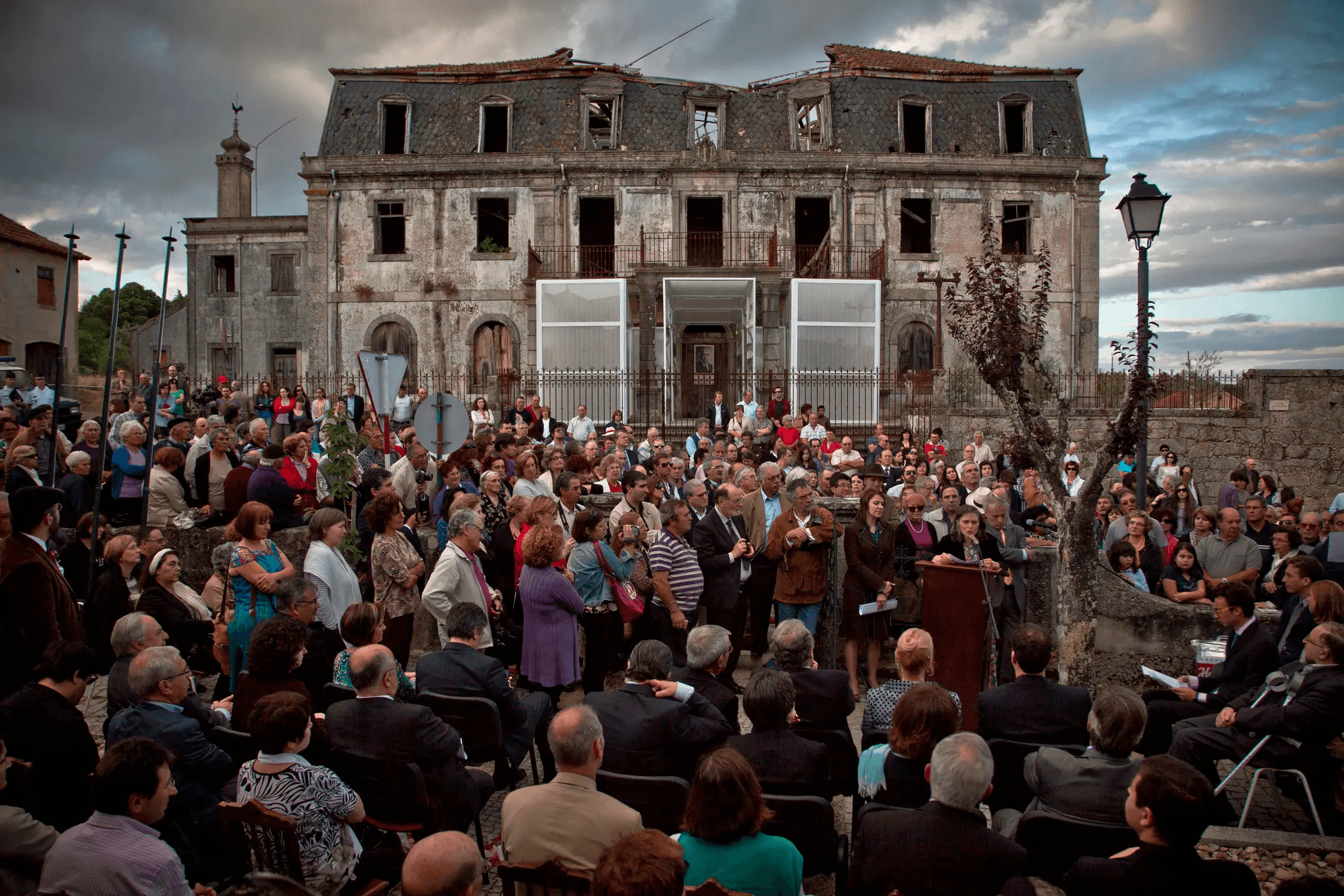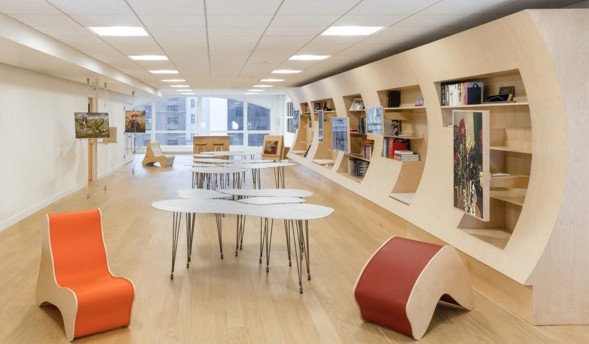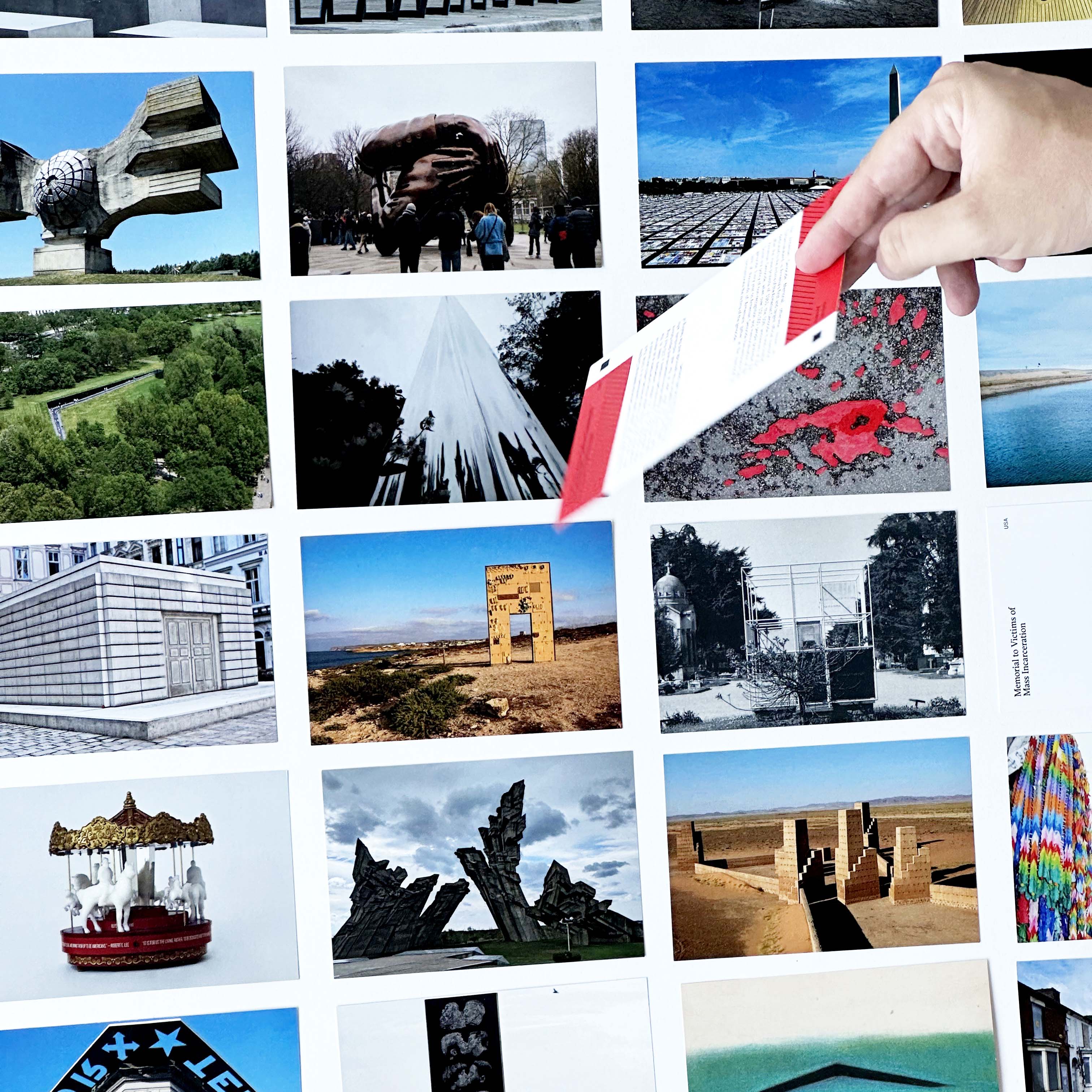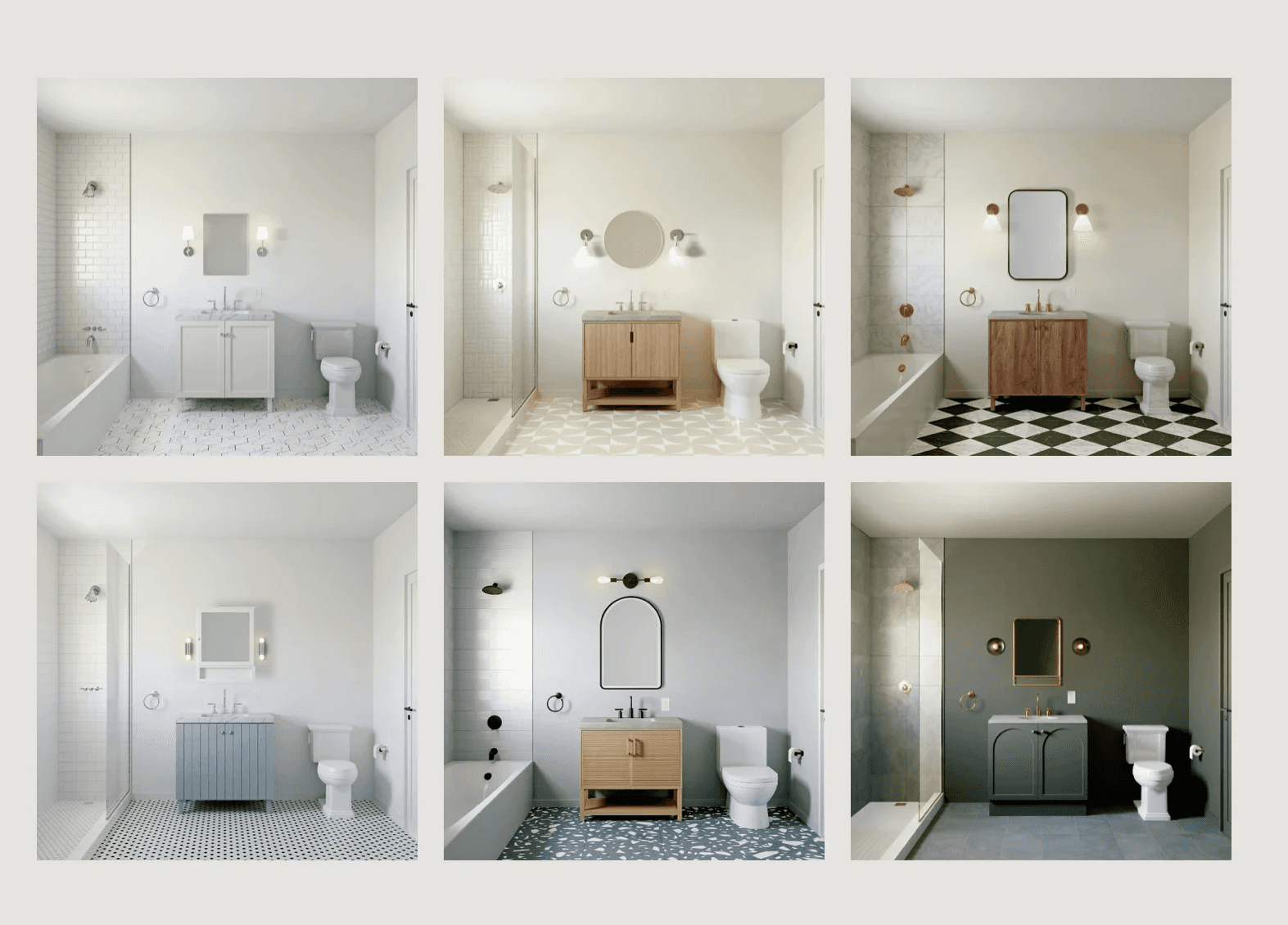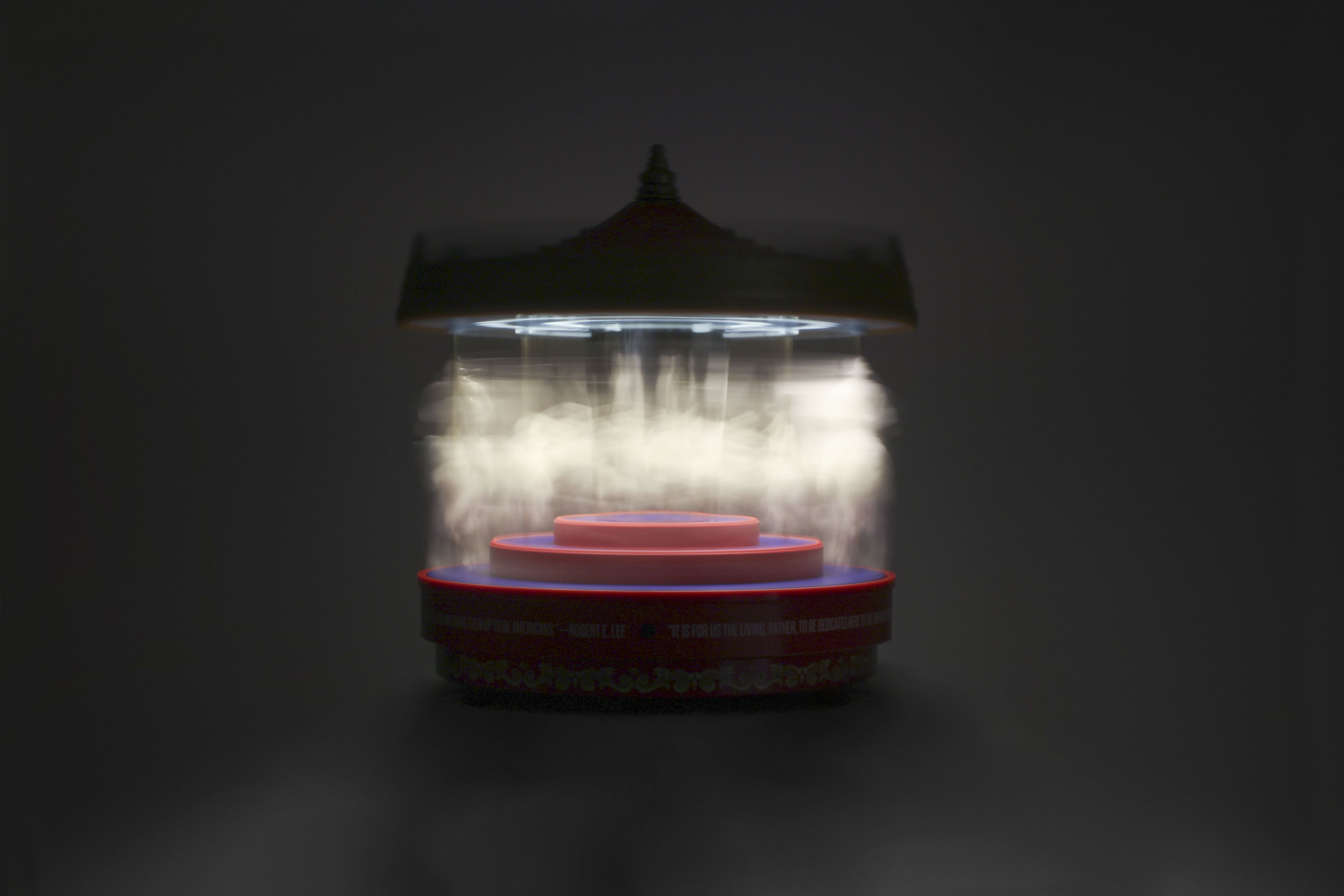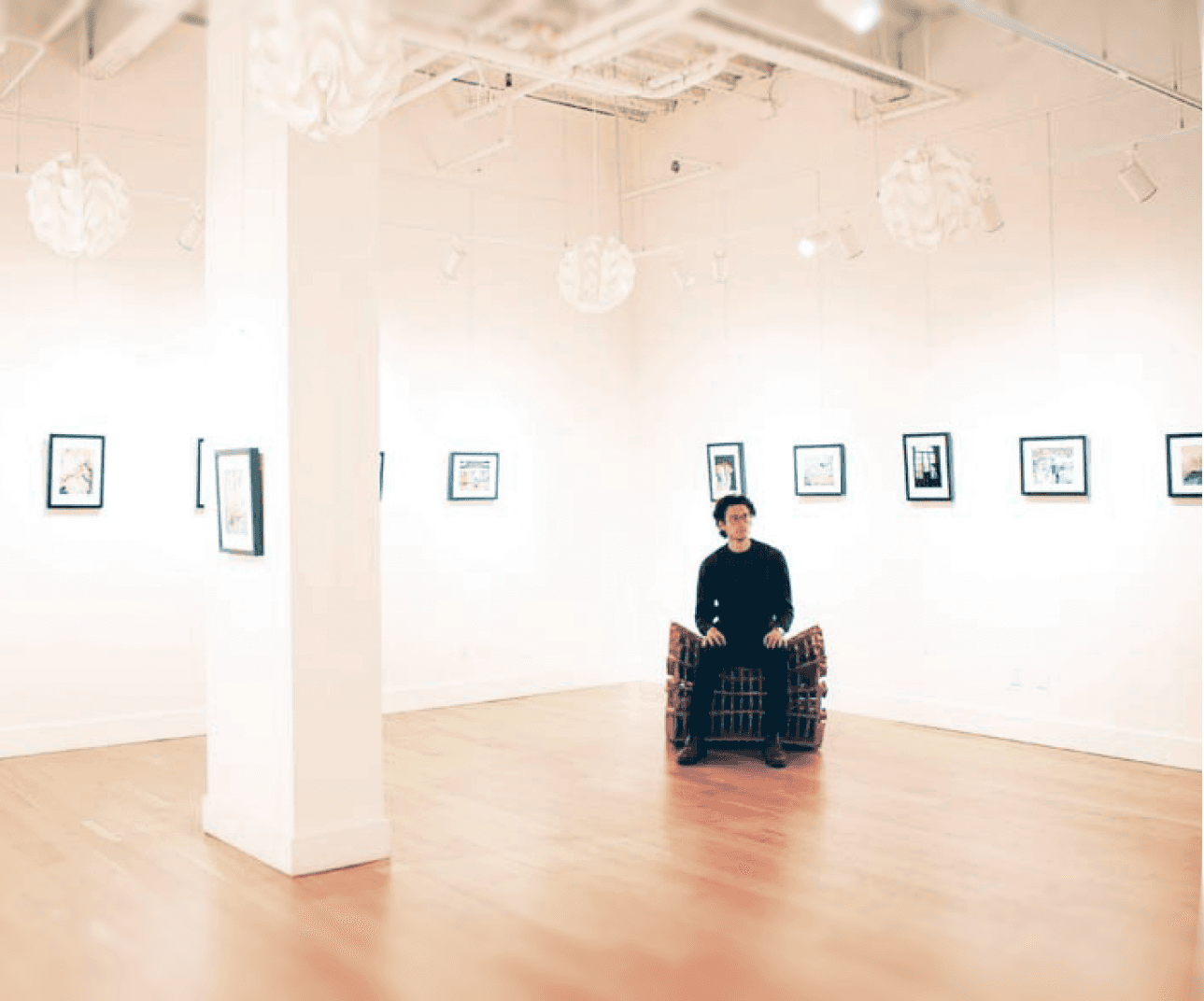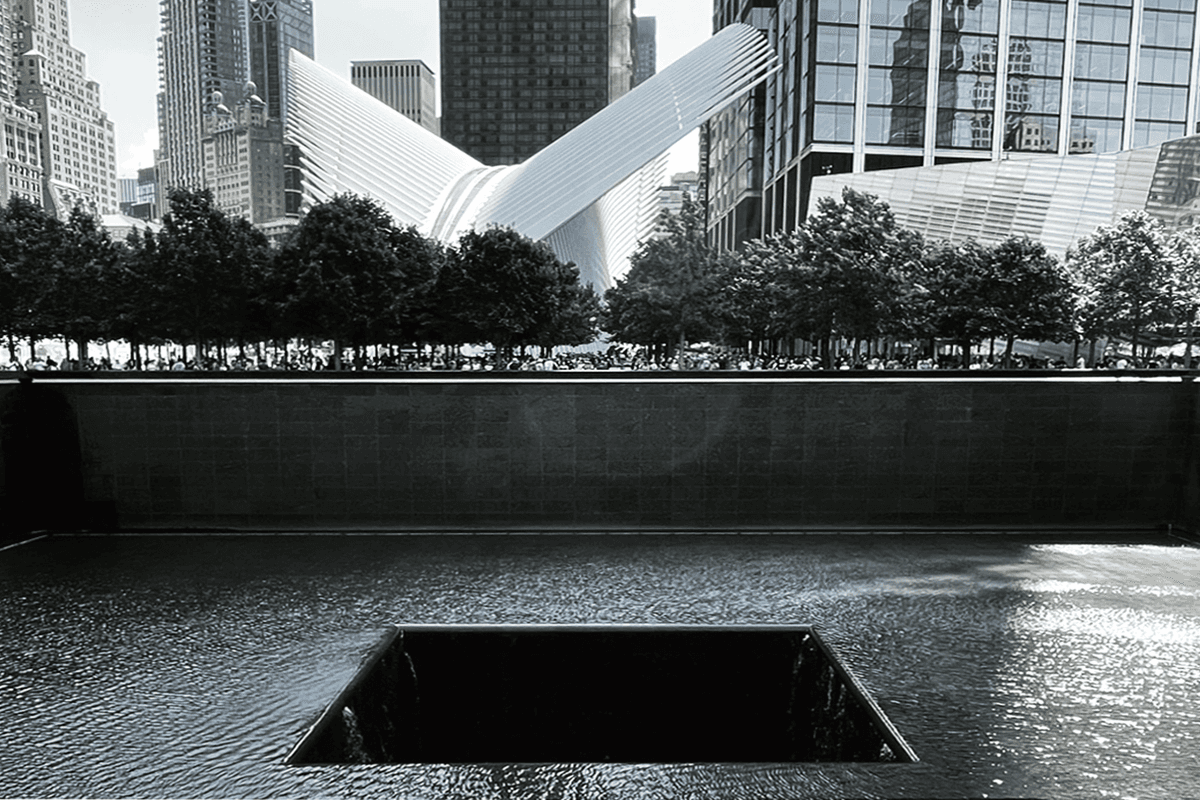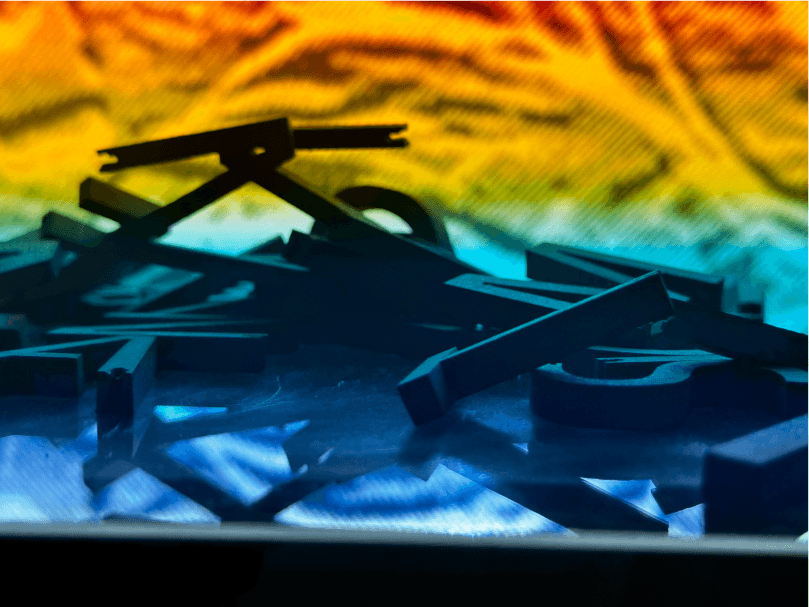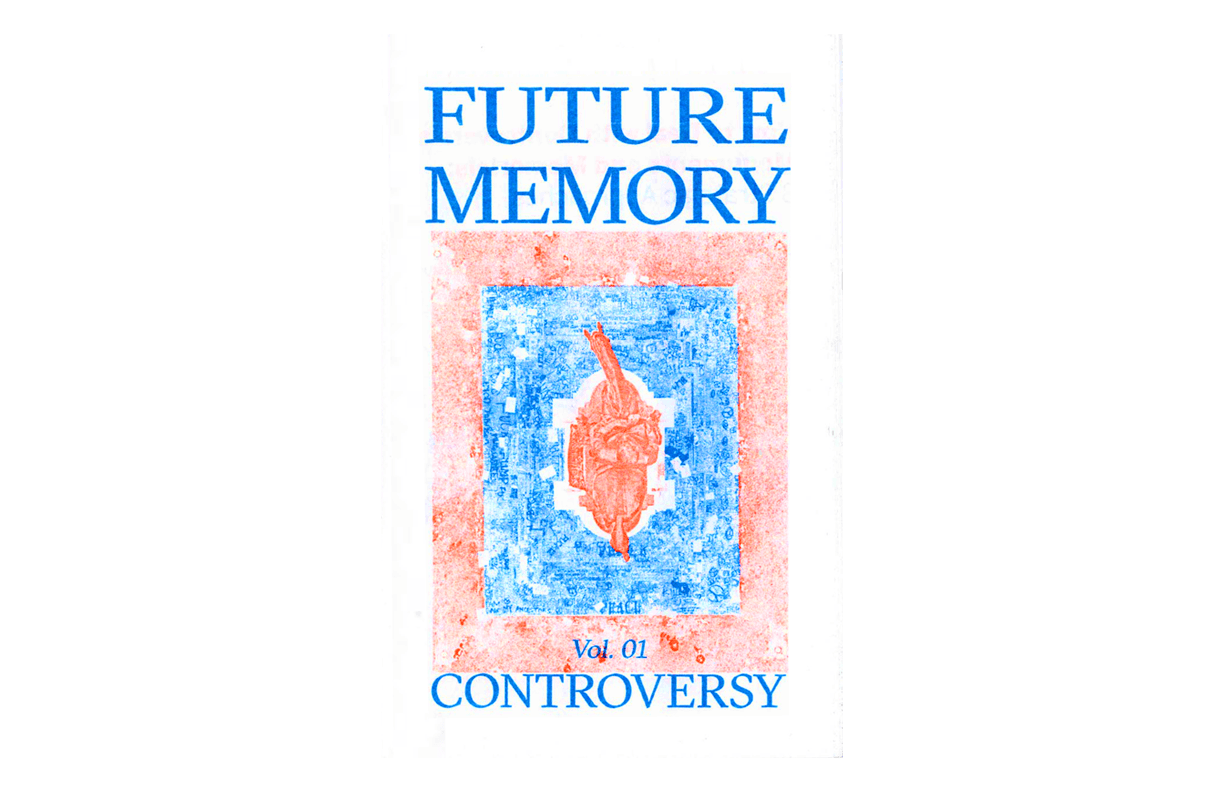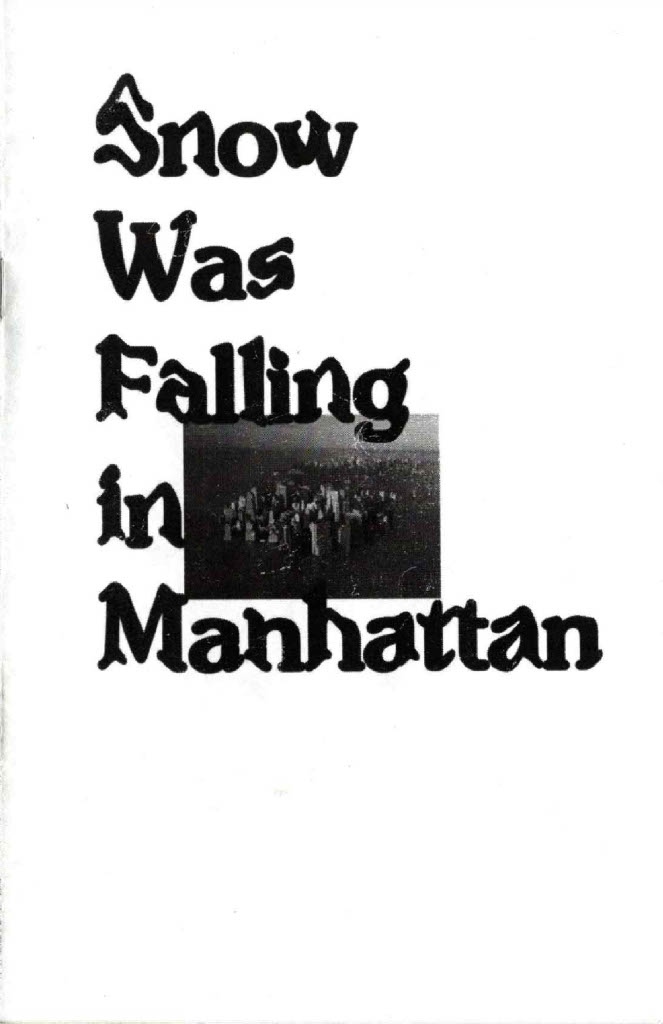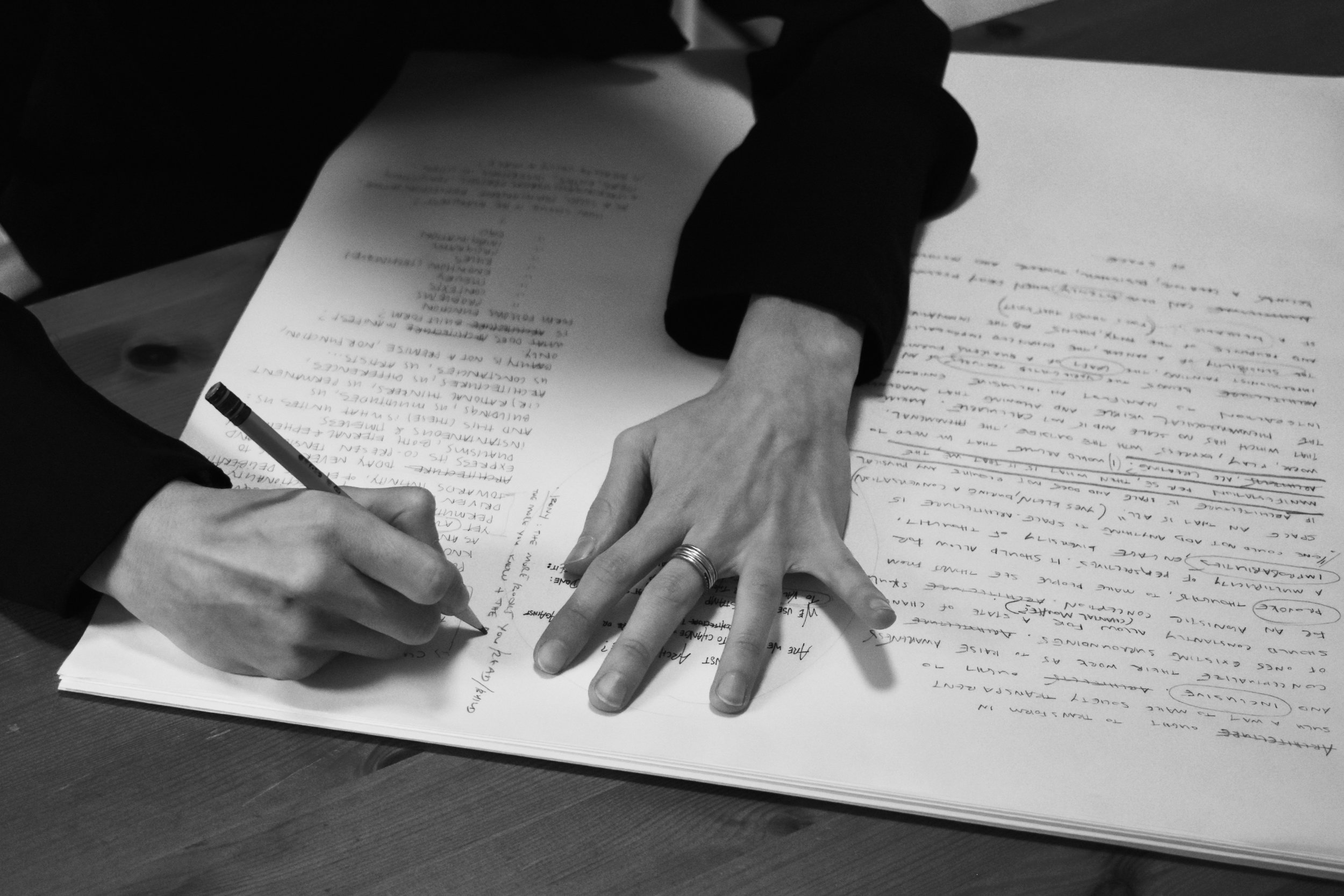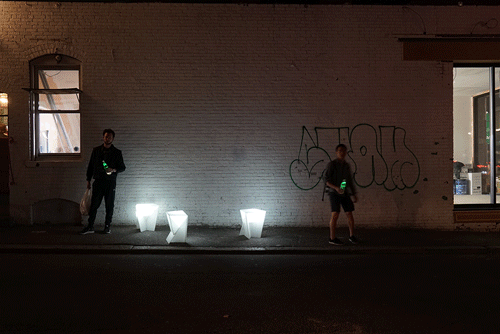Ex Archs / New Futurist Manifesto
Year
2018
Location
A collective manifesto unfolded over the course of our independent study. It is comprised of the ideas contained in weekly personal pros/statements from each one of us, challenging the current state of architecture and charting a new course intro a shared terminology. Each week three individual written statements were revealed and discussed every Monday (Manifesto Monday’s) to create a collective voice, with a shared conclusion. The shared manifesto was hand written into a single folded sheet of paper, as a representation of the shared stream of consciousness that developed, revealing the process and progress that took place.
The format of the manifesto is divided into three larger themes:
a. Analysis of the current state of architecture and direct ways to change it.
b. Personal narratives.
c. Personal beliefs and thoughts on the current practice model of architecture.
Each week our manifesto was sealed with a stamp; using our stamp to validate our thoughts, not as architects do, to get approvals.
We conducted a study of existent art and design manifestos, searching for language devices and content which we felt strongly about – either in agreement with or deeply against. Out of all of the manifestos we read, we felt that the Futurist Manifesto by Filippo Tommaso Marinetti, written in 1909, was both the most intriguing and problematic precedent. Filippo Tommaso Marinetti was directly aligned with both fascist and anarchist ideologies. He glorified war, sexism and violence in the Futurist Manifesto. However, many of the other ideas reflected in the manifesto are still relevant today as they were written in a time of great upheaval, change and technological innovation. We felt it appropriate and necessary to update it.
FeedBack is a meal. FeedBack is centered around the unfolding the New Futurist Manifesto, which consists of three parts, an introduction, an eleven point manifesto, and a conclusion, an ode to the format of the Futurist Manifesto; parts of which are printed on the sous plat. The primary focus of FeedBack is to encourage feedback of our eleven point manifesto. These eleven points reflect how we collectively see architecture and what we believe needs to be changed.
FeedBack can be performed anywhere, any number of times.
Filippo Tommaso Marinetti also had many performances and writings regarding food. One such example is the “Tactile Dinner” recently reenacted at the Guggenheim in 2014. He also wrote the Manifesto of Futurist Cooking, criticizing pasta! Marinetti believed that people think, dream and act according to what they eat and drink.
Food has been a big part of our working culture. Meeting every Monday morning to work on writing and research, we always made it a point to share in a meal. We also felt surprised that sharing food and drink, and caring for ourselves and each other, seemed to be antithetical to the unwritten rules of the architect’s daily routine. By refusing to give into the existing culture of self-sacrifice we emerged at table of opportunity and productivity.
We hope the FeedBack loop is a seamless branch of our weekly excursive tradition
Collaborators:
Ines Benitez, Penelope Phylactopoulos

